Tourist Model Course
Ohara Course
The Sanzenin temples in the Rakuhoku area of Kyoto are famous because they appear in a lyric part of old Japanese music.
It’s about an hour by bus from central Kyoto.
Famous tourist spots are full of tourists from all over the world, so it’s hard to go sightseeing quietly,
but Ohara is a recommended place for those who want to see a quiet and calm place.
Then let’s leave for Ohara, a mountain village in Kyoto!
To go to Ohara without changing trains, take a bus from Kyoto Station.
[No transfer at the Kyoto Station bus stop] ↓
Take a bus of Kyoto Bus Route 17 (Time to complete: About 1 hour)
[You need to transfer, but you can also go by train or bus.]
Subway Kokusaikaikan → Kyoto Bus Route 19 (※ Subway/bus 1 or 2 day ticket cannot be used)
Keihan Electric Railway Demachiyanagi Station → Kyoto Bus Route 16, and Route 17
* Some routes may not accept one- or two-day subway or bus tickets.
The view from the window of the bus bound for Ohara was like I was climbing up the mountain and going into the nature,
so I could enjoy it even though the time was long. Arrived at Ohara bus stop!
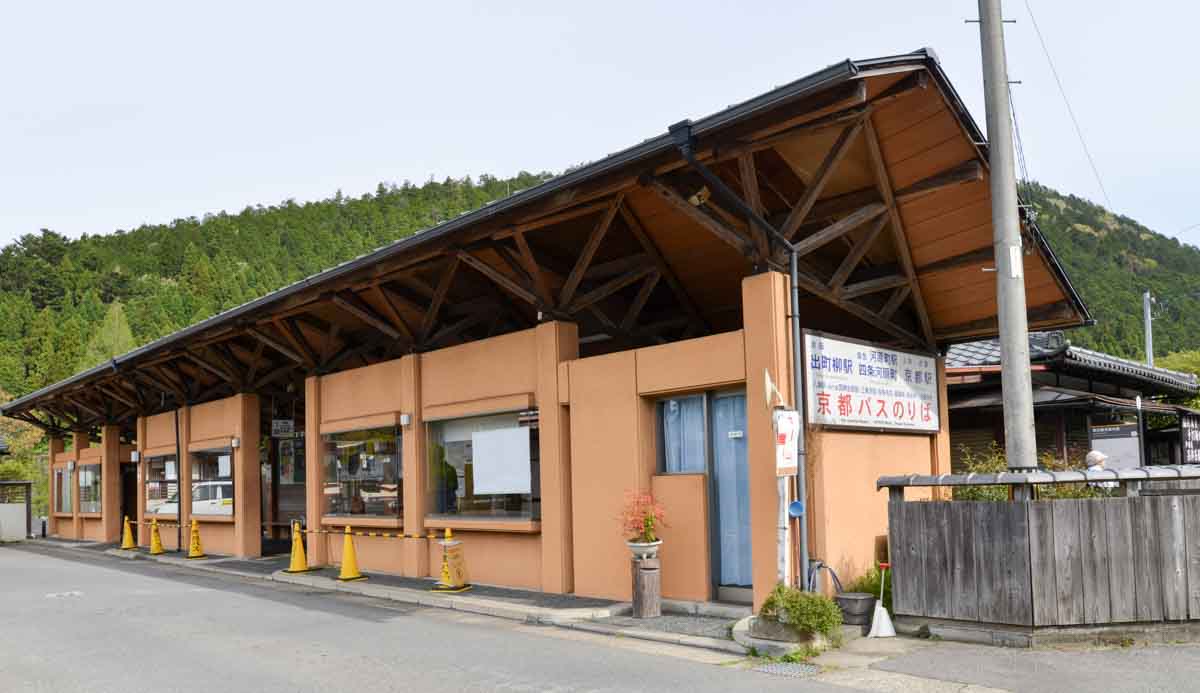
I arrived at around 8 o’clock in the morning, so the air is nice, cool, clean and it’s a great morning.
I felt refreshed from inside my body! It takes about 10 minutes from Ohara bus stop to Sanzenin on foot, but this time I will go first from Hosenin Temple.
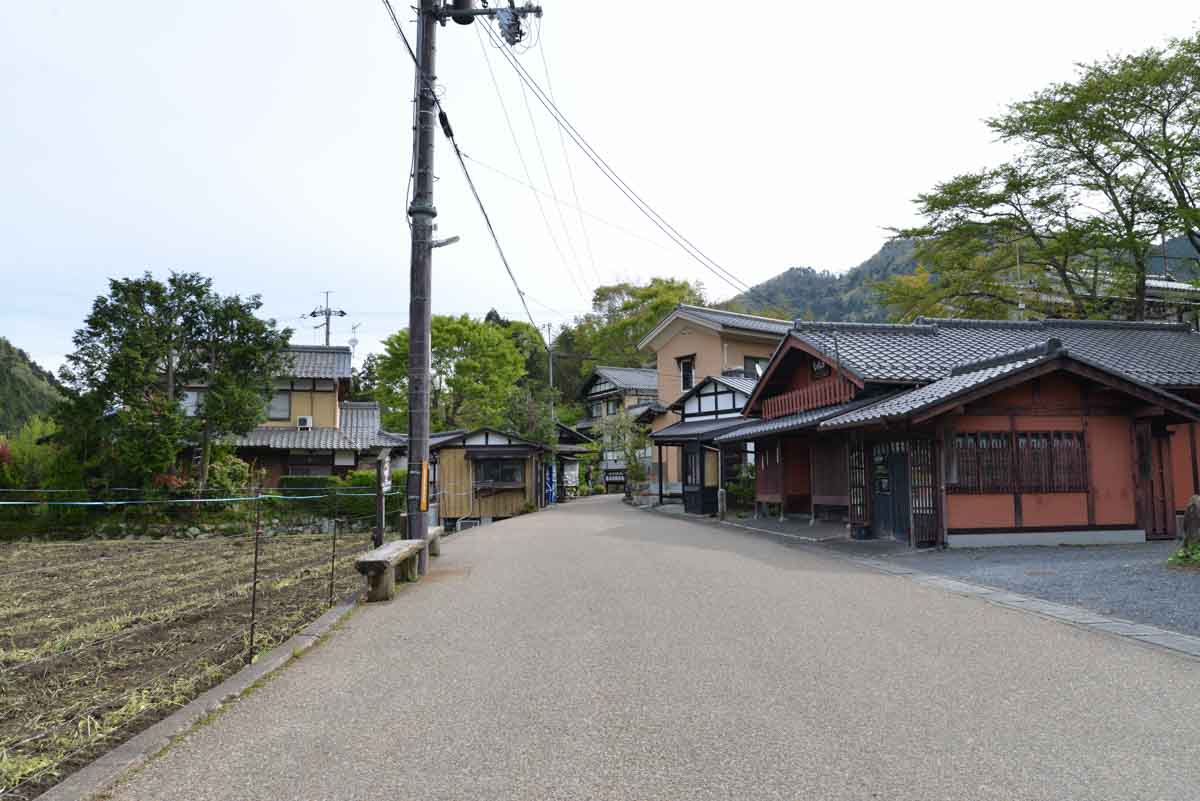
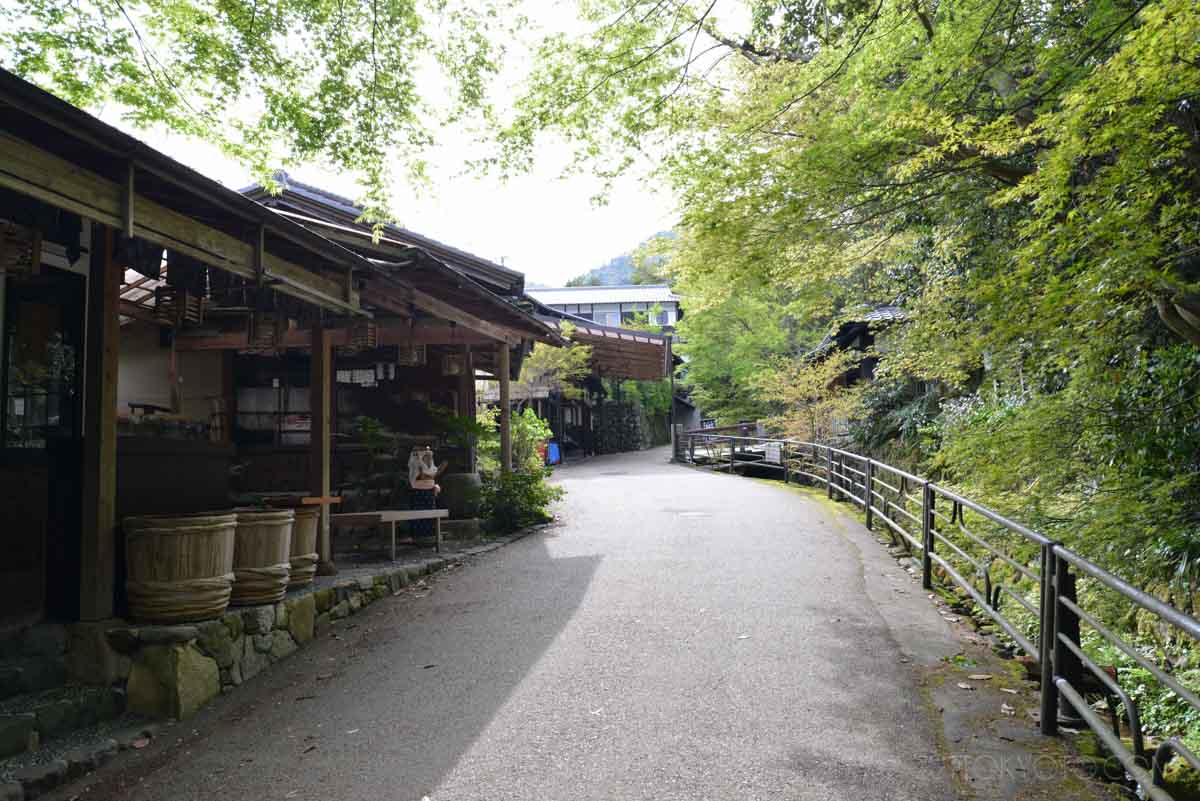
A holiday morning, there were a lot of people there early in the morning.
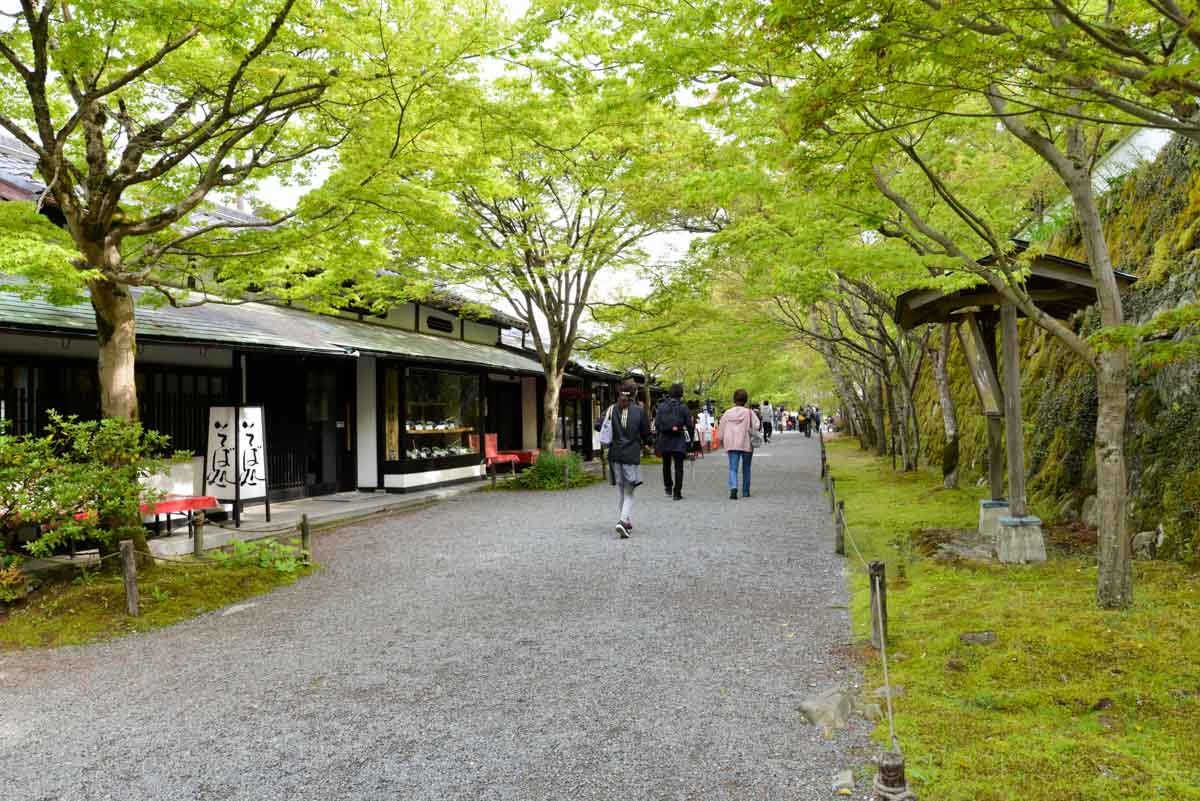
Hosenin Temple is located at the back of the temple, past Sanzenin Temple in the same direction as Sanzenin Temple.
It opens at 9:00 a.m., so I decided to get there early and wait, but there were already a few people lined up.
Hosenin Temple
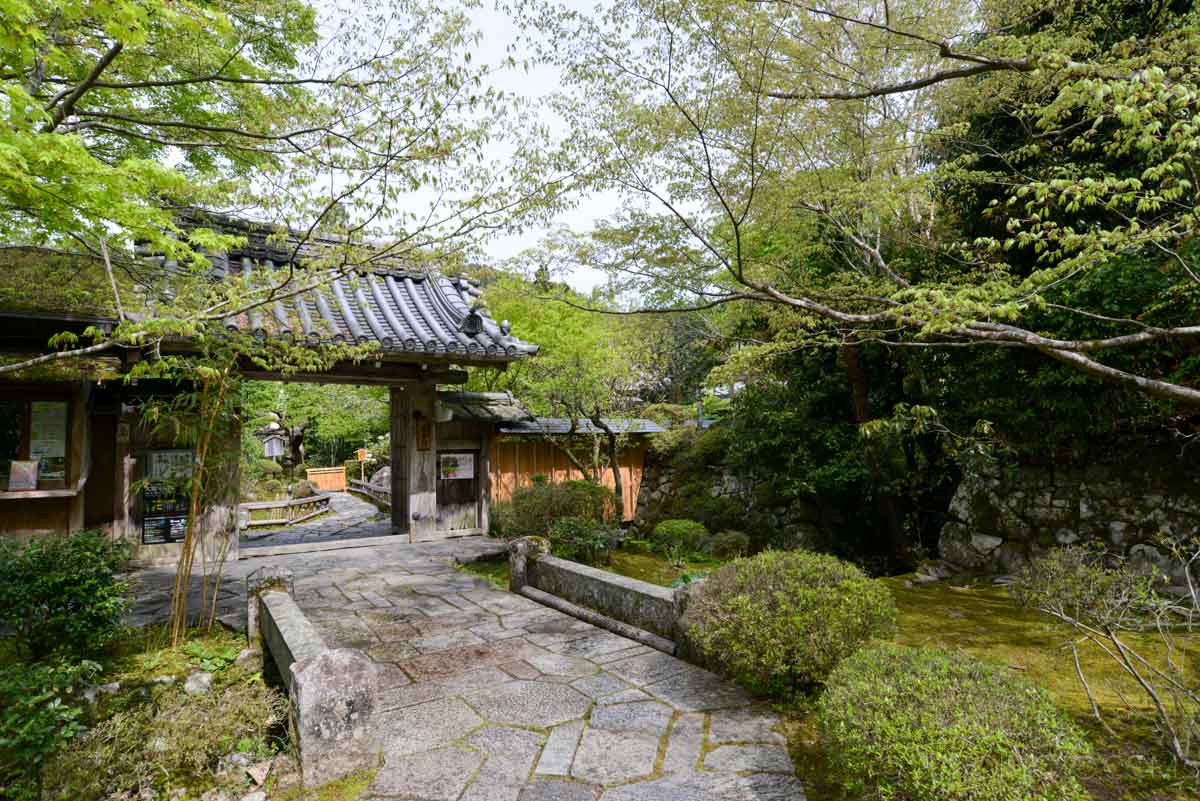
There are a lot of people who have a full-scale camera that is coming for a photo opportunity.
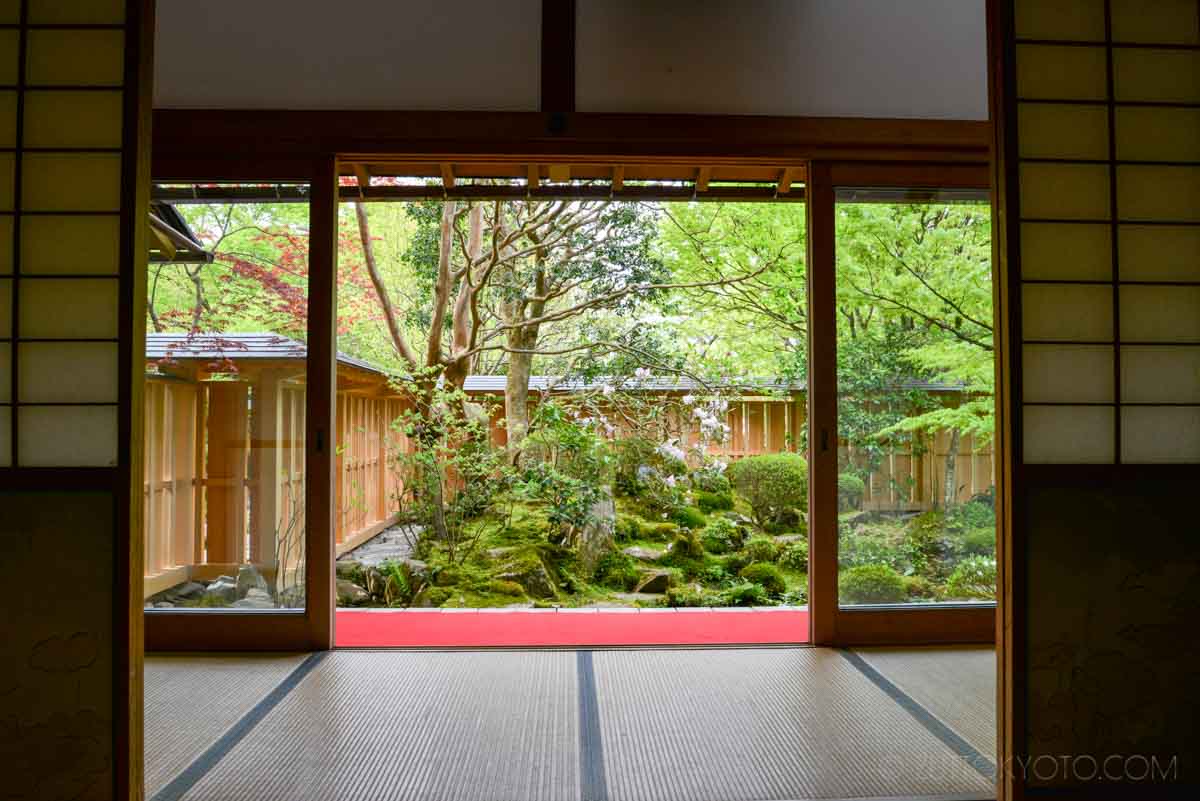
Admission is 800 yen for adults, 700 yen for middle and high school students, and 600 yen for elementary school students (tea and sweets included).
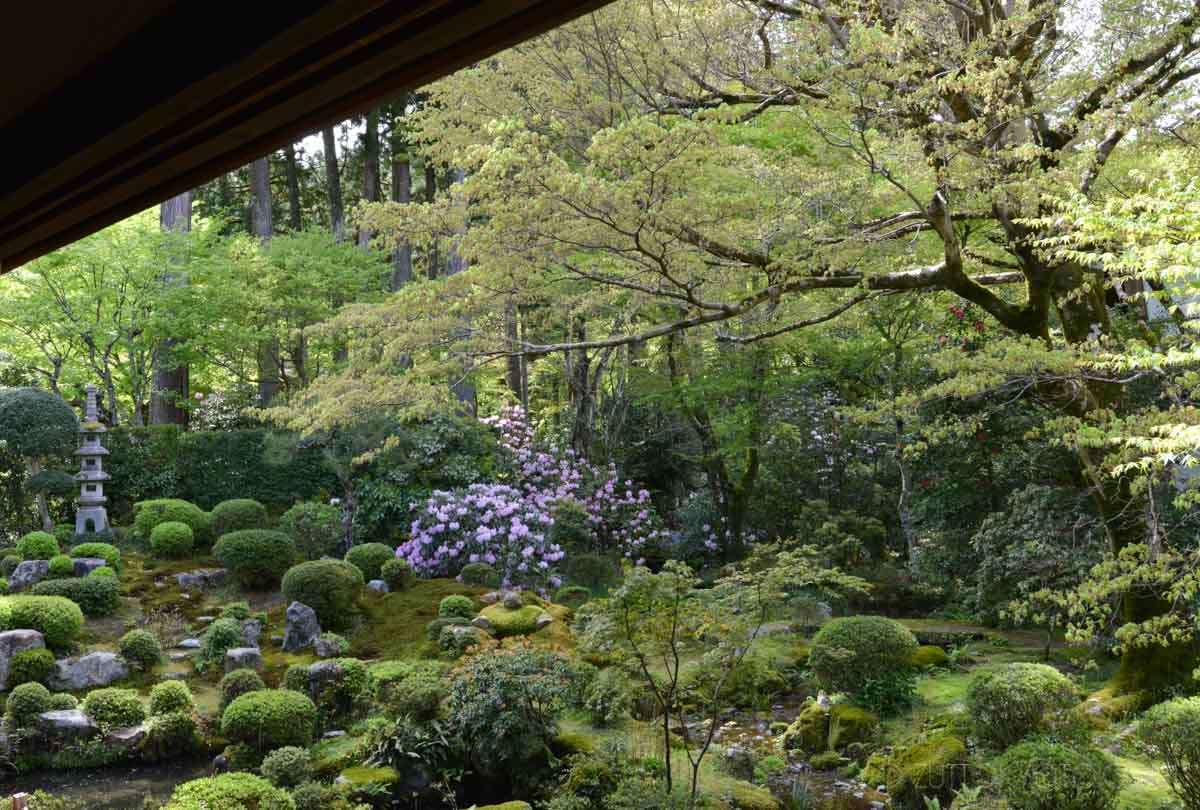
Hozenin Temple was built as a monk’s quarters for Shorin-in. This five-leaf pine tree is an amazing 700 years old!
It has been designated as a natural monument by Kyoto City and is said to be in the shape of “Omi Fuji”.
This kind of view is called a framed garden, in which the space between the pillars is used as a frame for appreciation.
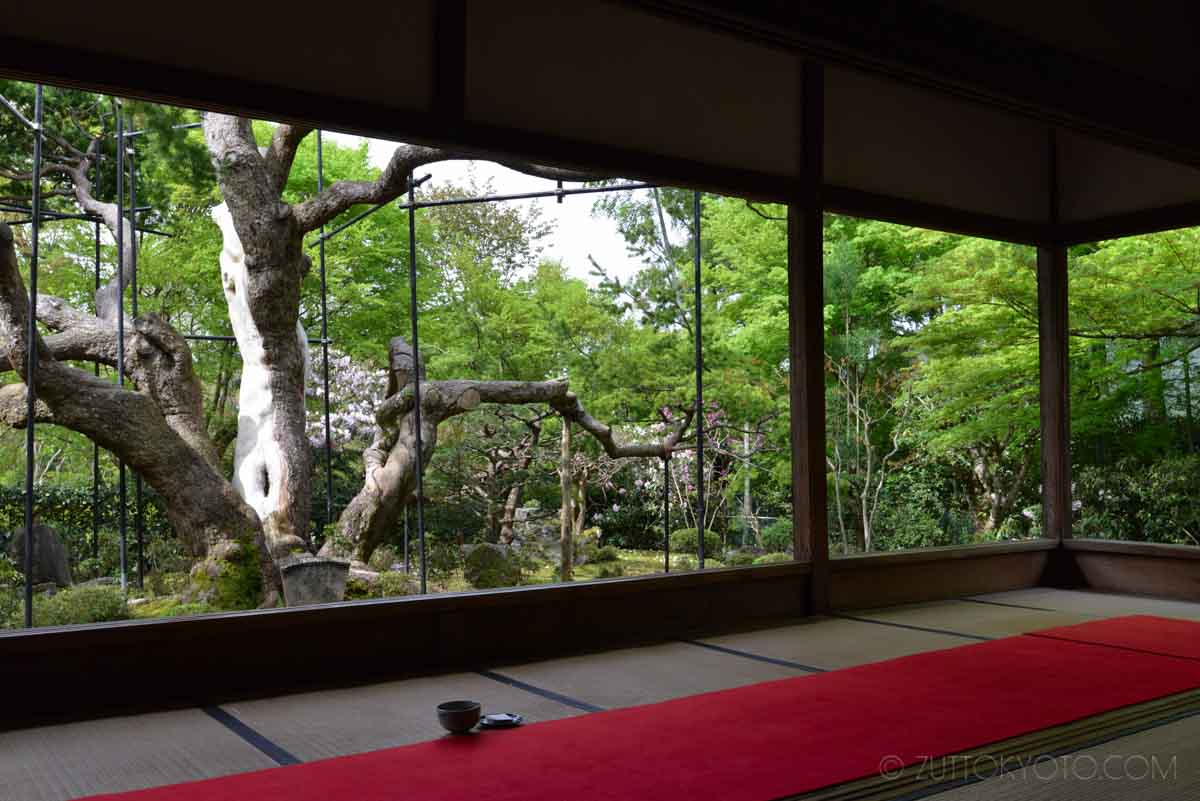
I’ll have tea and snacks while looking at the wonderful garden.
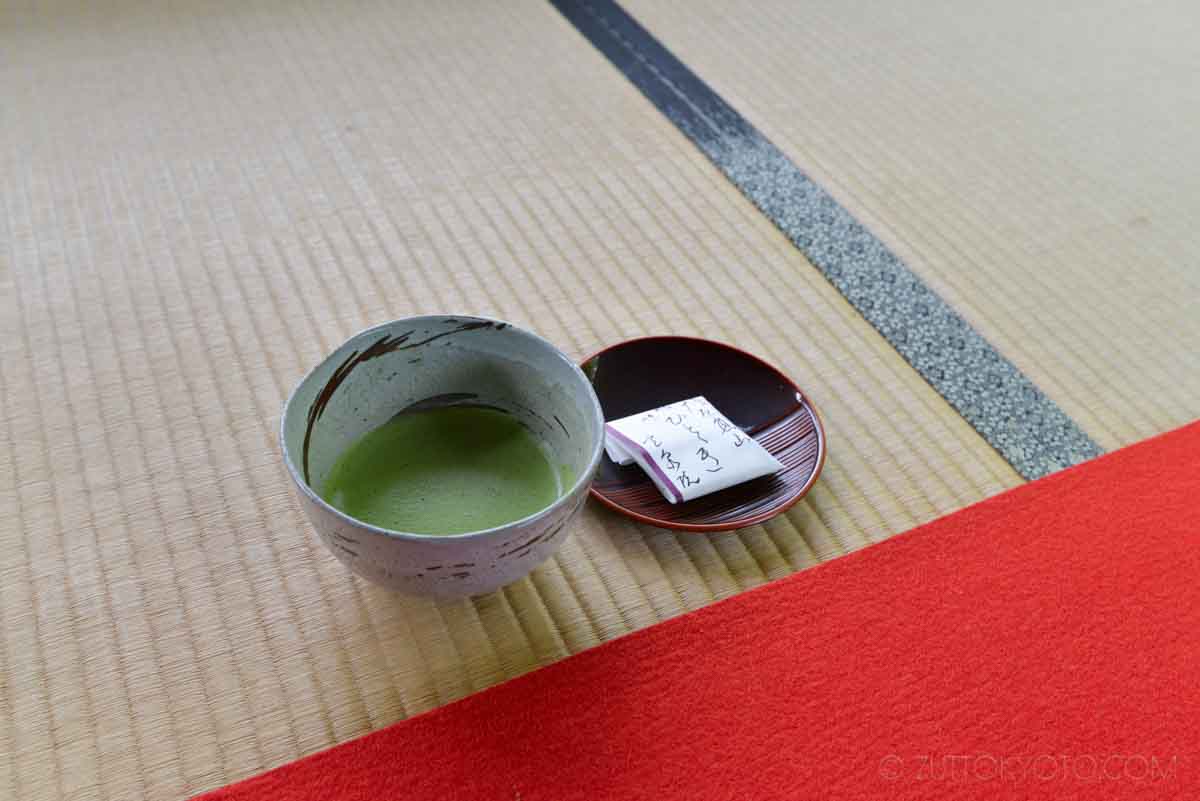
I don’t usually have a chance to drink matcha, but it’s nice to enjoy a cup of tea while quietly viewing the garden.
Also, there is a blood ceiling in Hosenin. Several hundred people including Mototada Torii,
a loyal retainer of Tokugawa fought against Toyotomi’s army and committed suicide in Fushimi Castle,
and they are enshrined on the ceilings of temples such as Hosen’in to make a memorial service for these generals.
There are several other temples in Kyoto that have blood ceilings besides Hosenin.
I didn’t look closely, but if you look closely, you may feel a little scared…
Leaving Hosenin, let’s go to Jikouin, which is just around the corner! On the way is Shorin-in Temple.
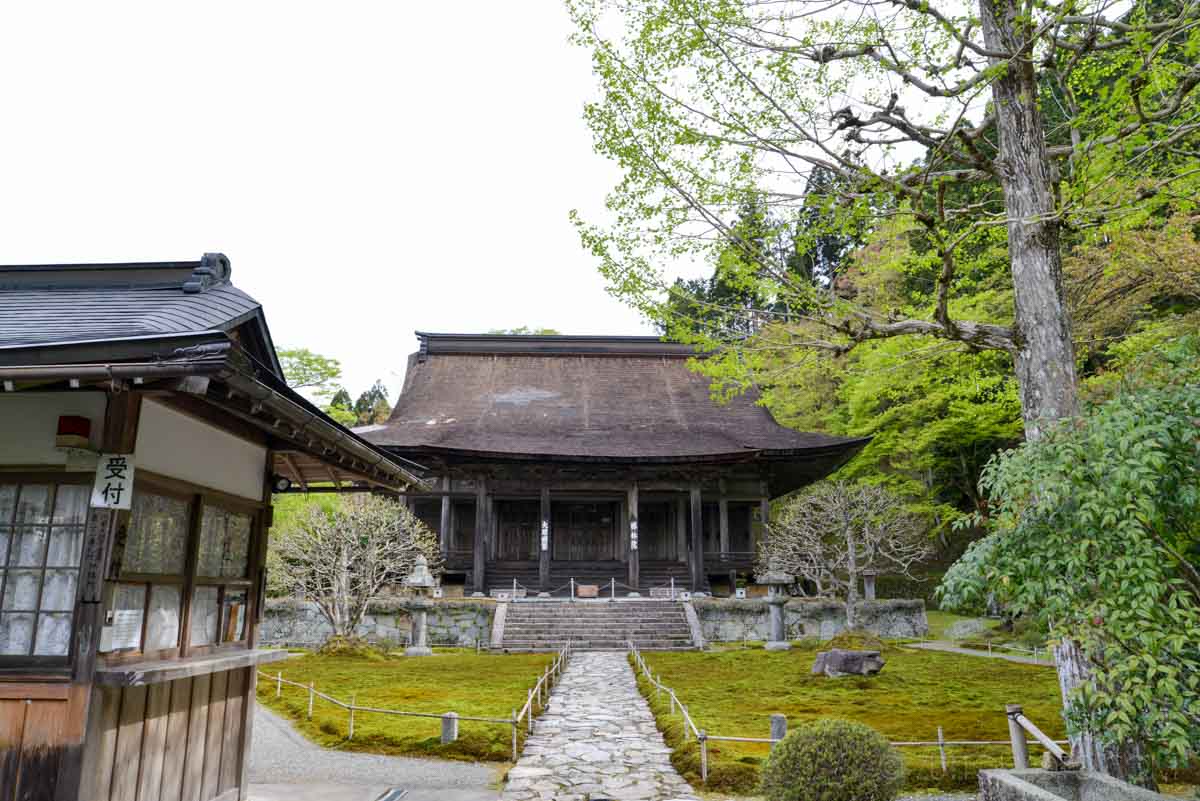
I arrived at Jikkoin Temple.
Jikkoin Temple
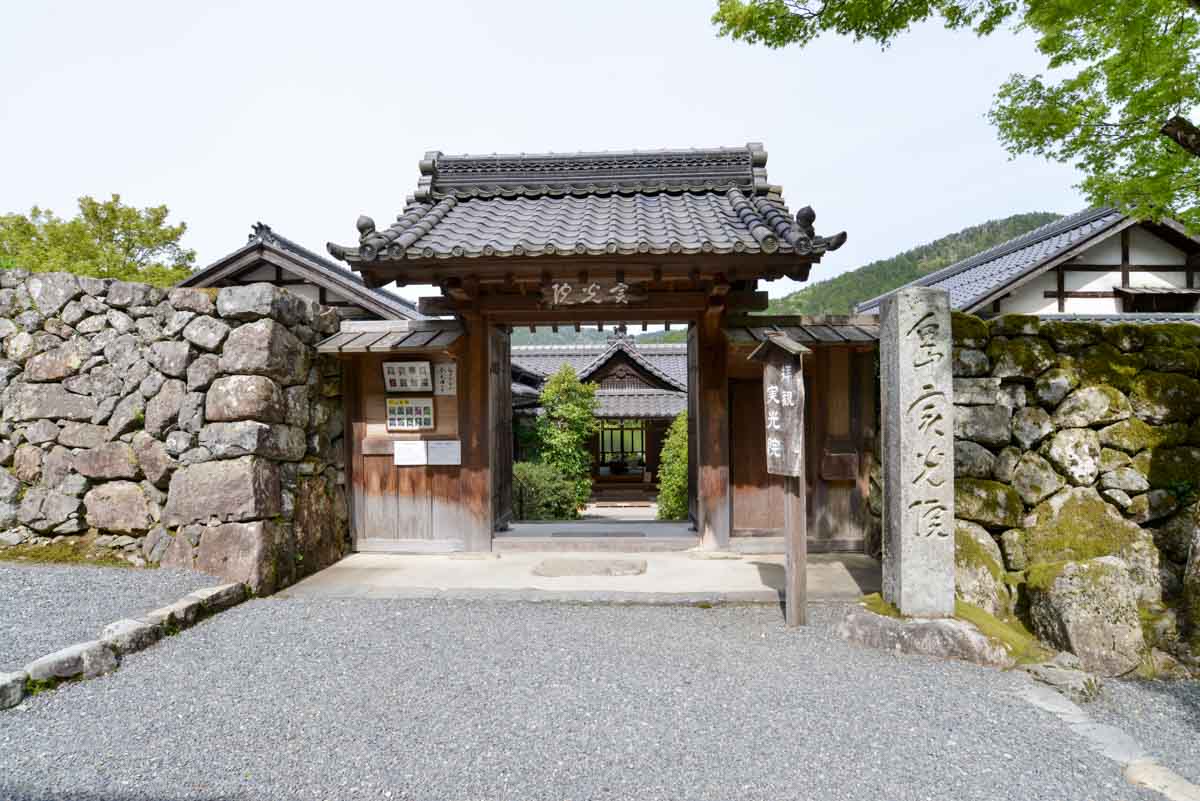
There is a bell at the entrance and it says “Please ring the bell and wait for a while.”.
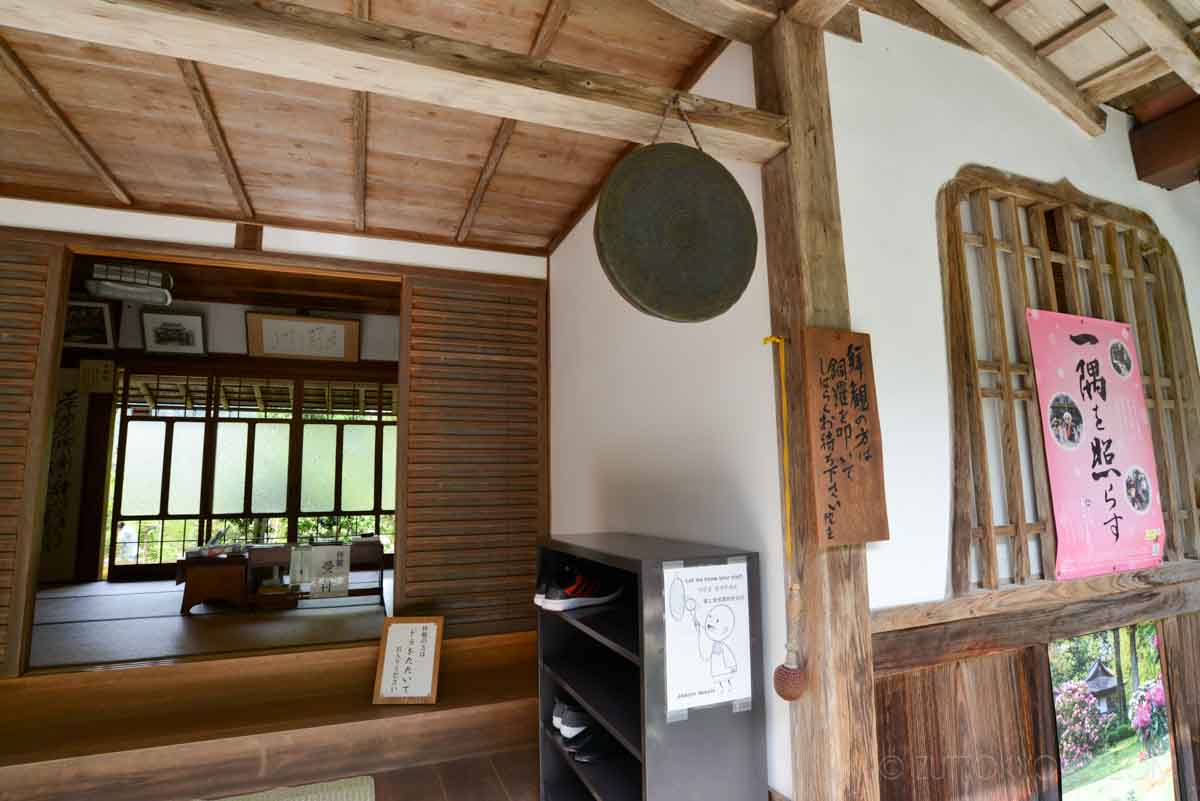
When I tried to hit the bell ・・・ the receptionist came out from inside, and I was kind enough to say “Please ring.” and let it ring.
Jikitsu-in Temple is a branch temple of Shorin-in Temple and one of the monasteries.
Entrance fee (Comes with matcha and tea sweets.) Adults: 700 yen (University students and junior and senior high school students) Children: 300 yen
When I went there, the entrance fee was separate for matcha and chagashi.
There are seasonal wild grasses planted, and the “Keishin-en Garden” is held at the Chisen appreciation style.
You can enjoy tea while looking at the garden from the room, or you can walk around the garden to appreciate it.
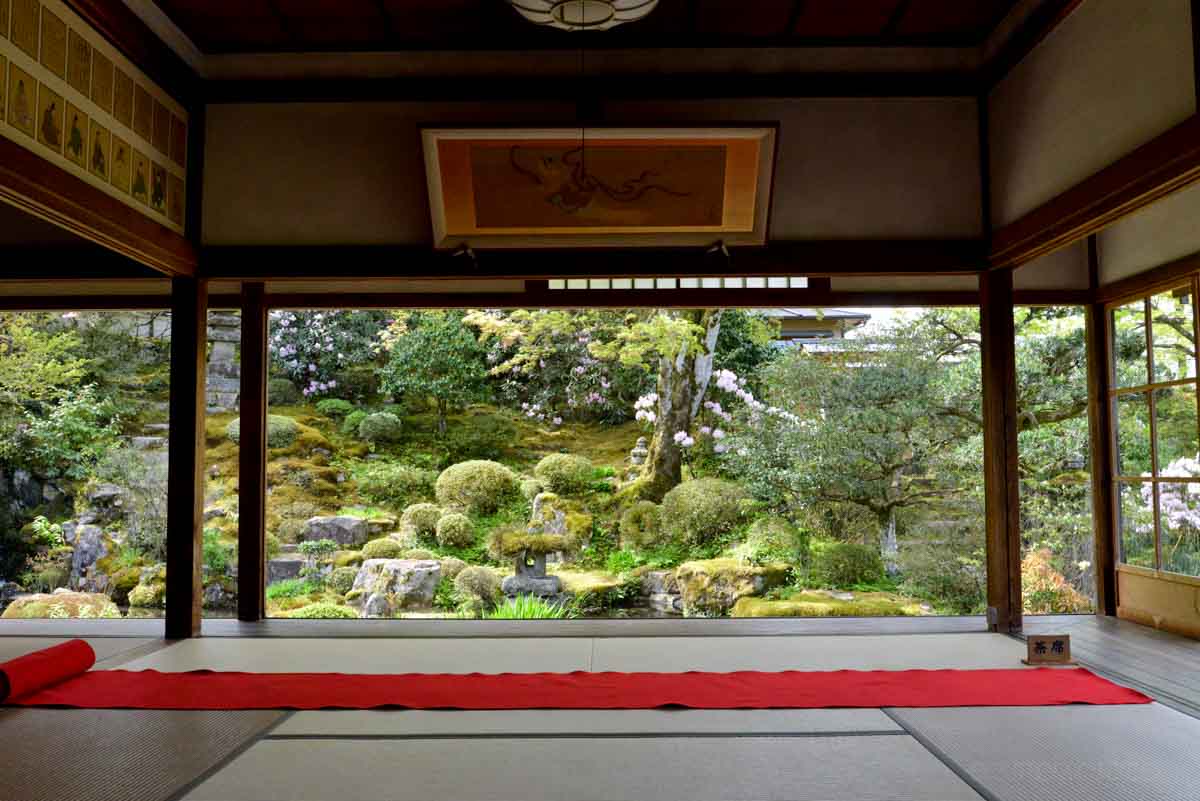
Since we’re here, let’s take a walk through the gardens! This is a wonderful garden.
It was such a wonderful Japanese garden, and you could feel the uniqueness of Kyoto.
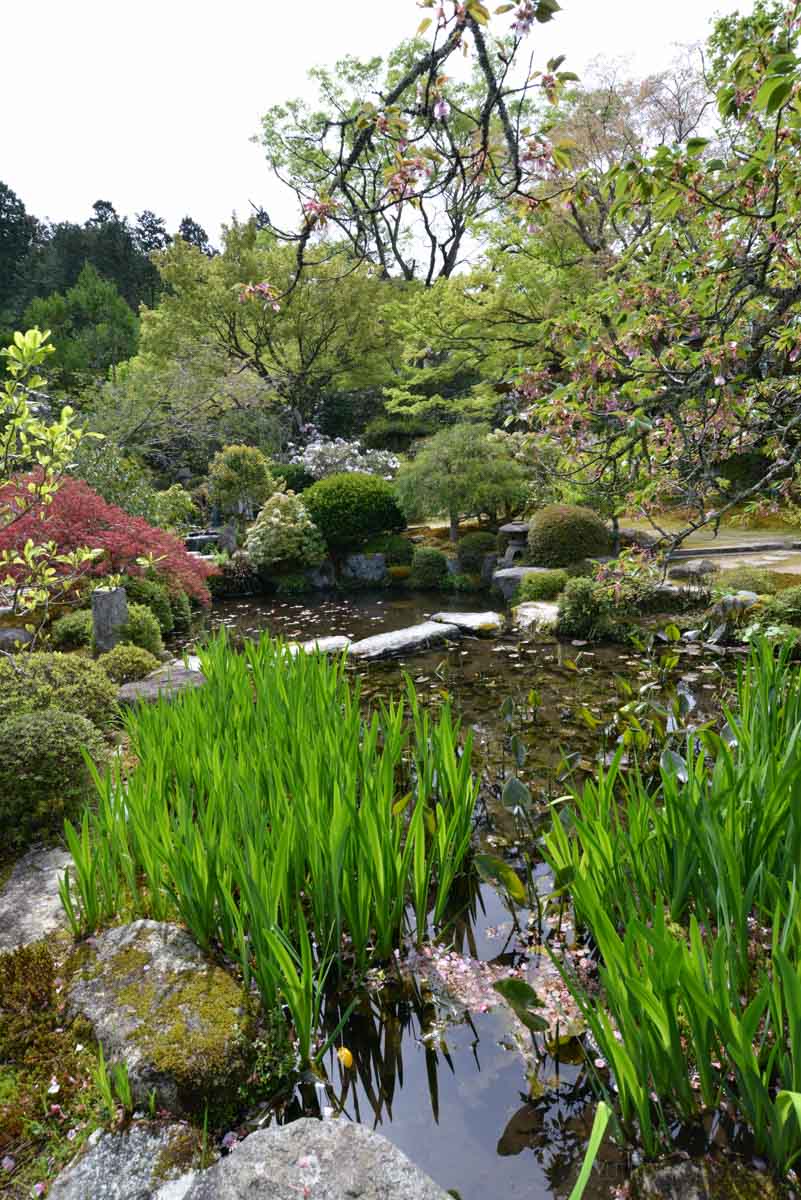
If you look closely at the picture below, you can see some people taking care of their gardens.
I guess that’s why they are able to maintain the landscape of this garden.
I had a cup of tea while looking at the beautiful garden.
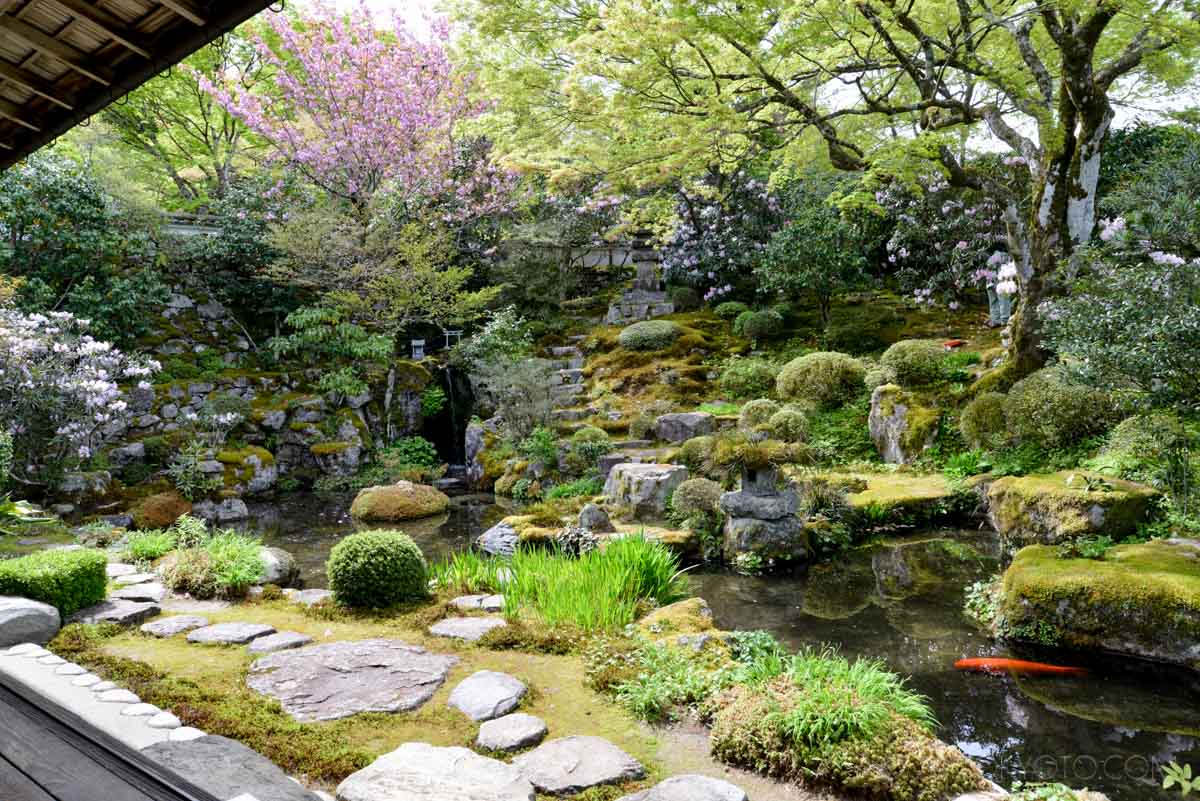

I felt as if my heart was cleansed by quietly enjoying a cup of tea and looking at the beautiful garden. Also,
I heard that there is a rare variety of cherry tree called “Fudan Zakura” in Jyutsuin that blooms from early autumn to the following spring.
If you visit there during that season, please take a look at it. Next, it’s finally time to go to Sanzenin!
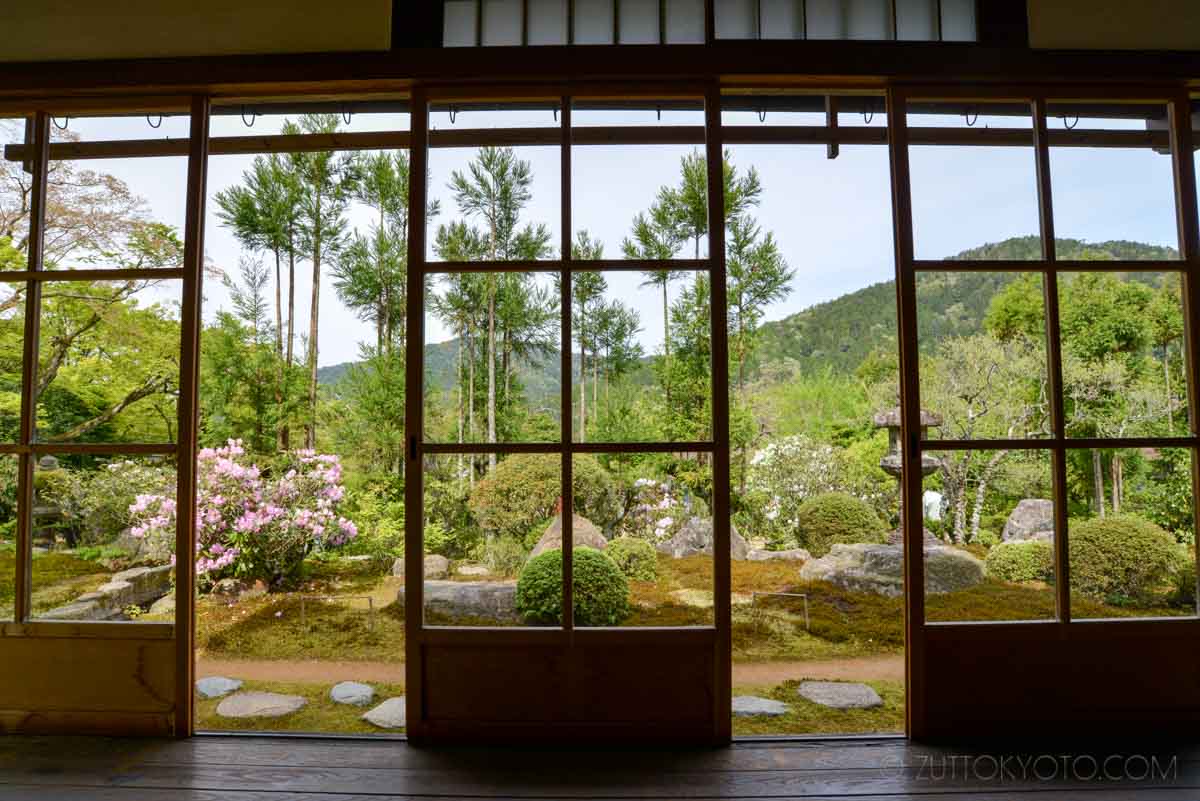
Sanzenin Temple
Entrance fee: Adult: ¥700
Junior and High school students: ¥400
Elementary school students: ¥150
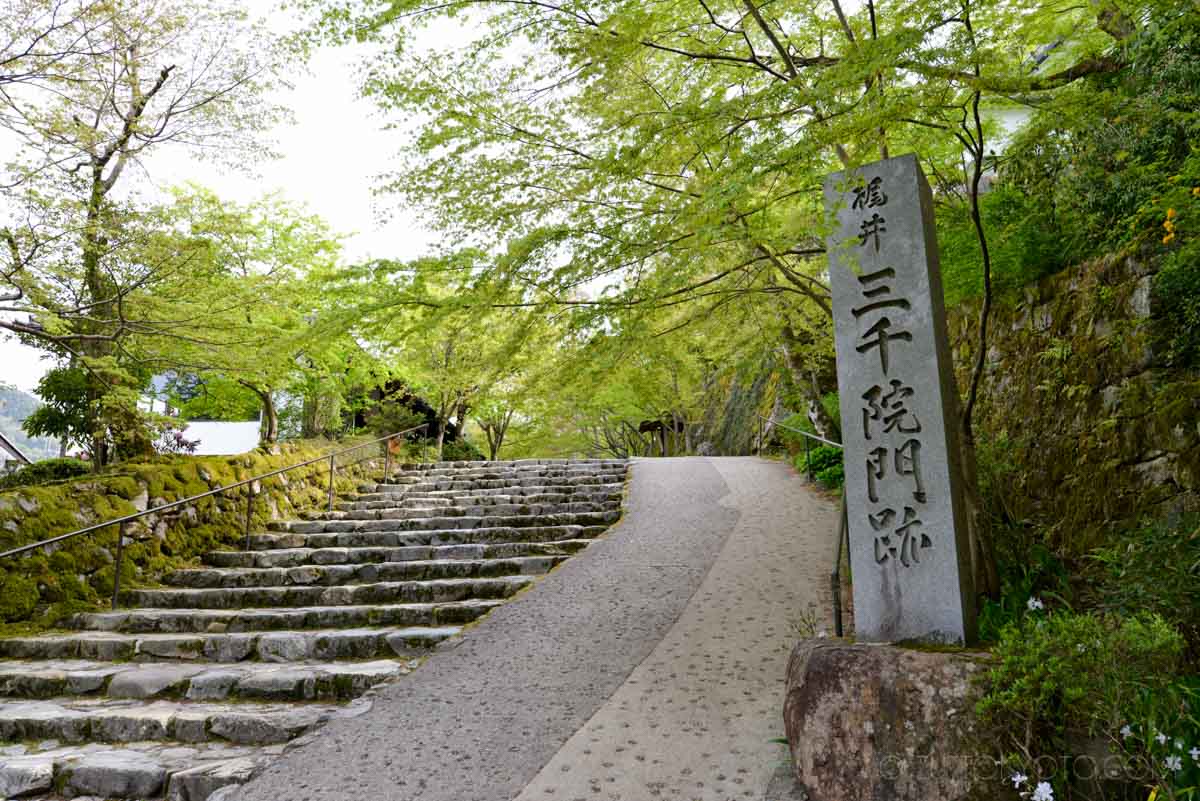
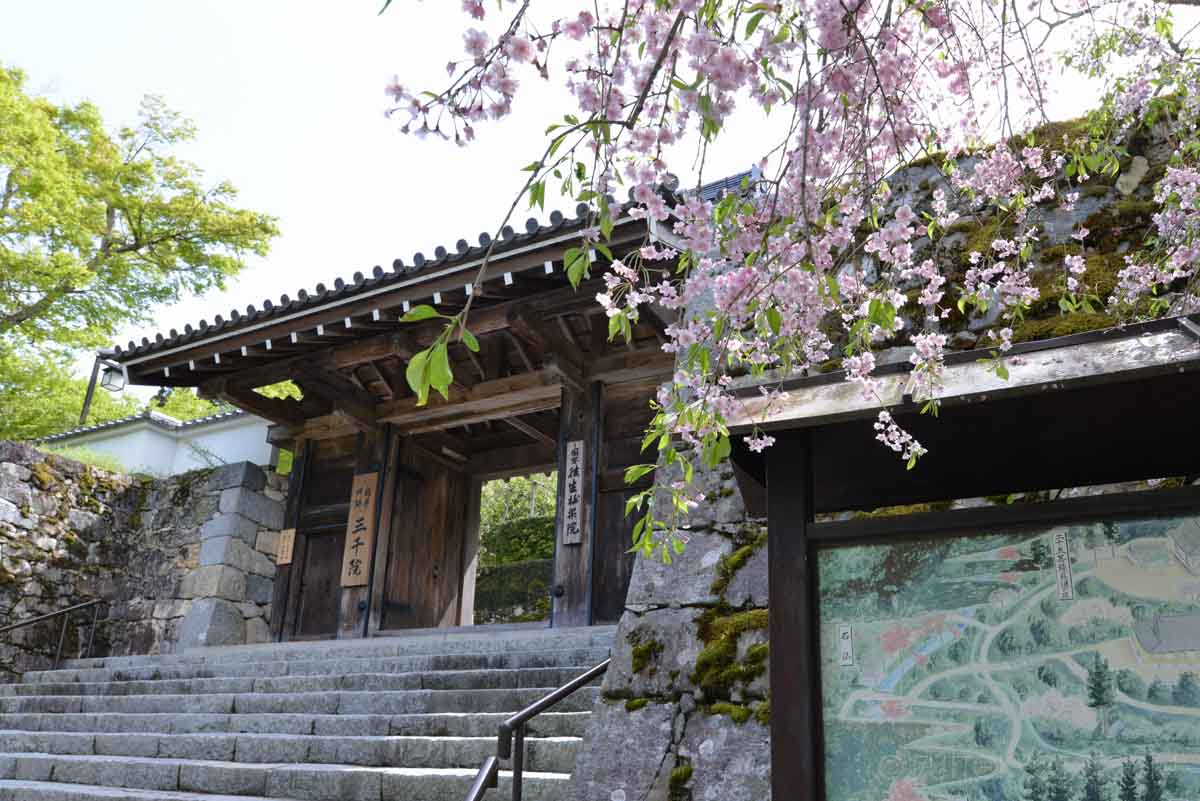
Late blooming cherry blossoms were still blooming.
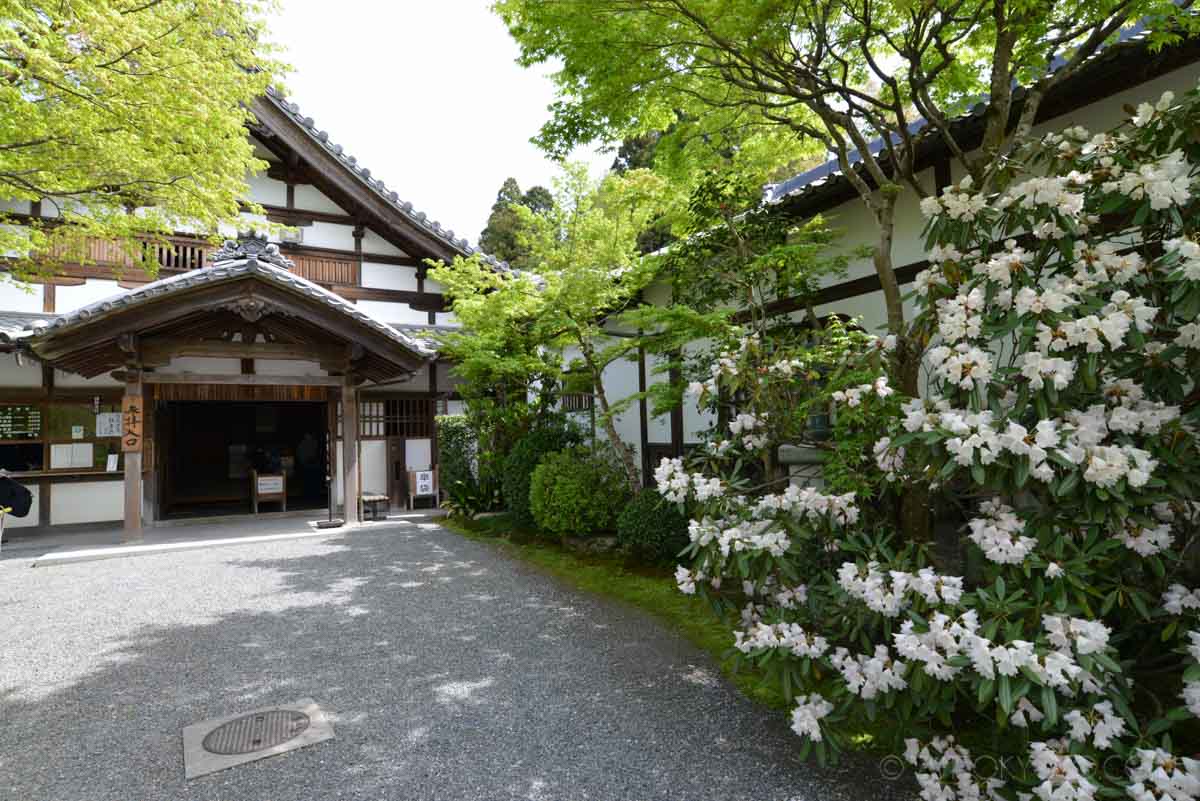
The Sanzenin Temple is one of the 5 Monzeki (Sanzen) temples of the Tendai sect along with Shorenin Monzeki Temple and
Manshuin Monzeki Temple. From the guest hall you can enjoy the Chisen Kanshoshiki Teien “Juheki-en Garden and Arisei-en Garden”.
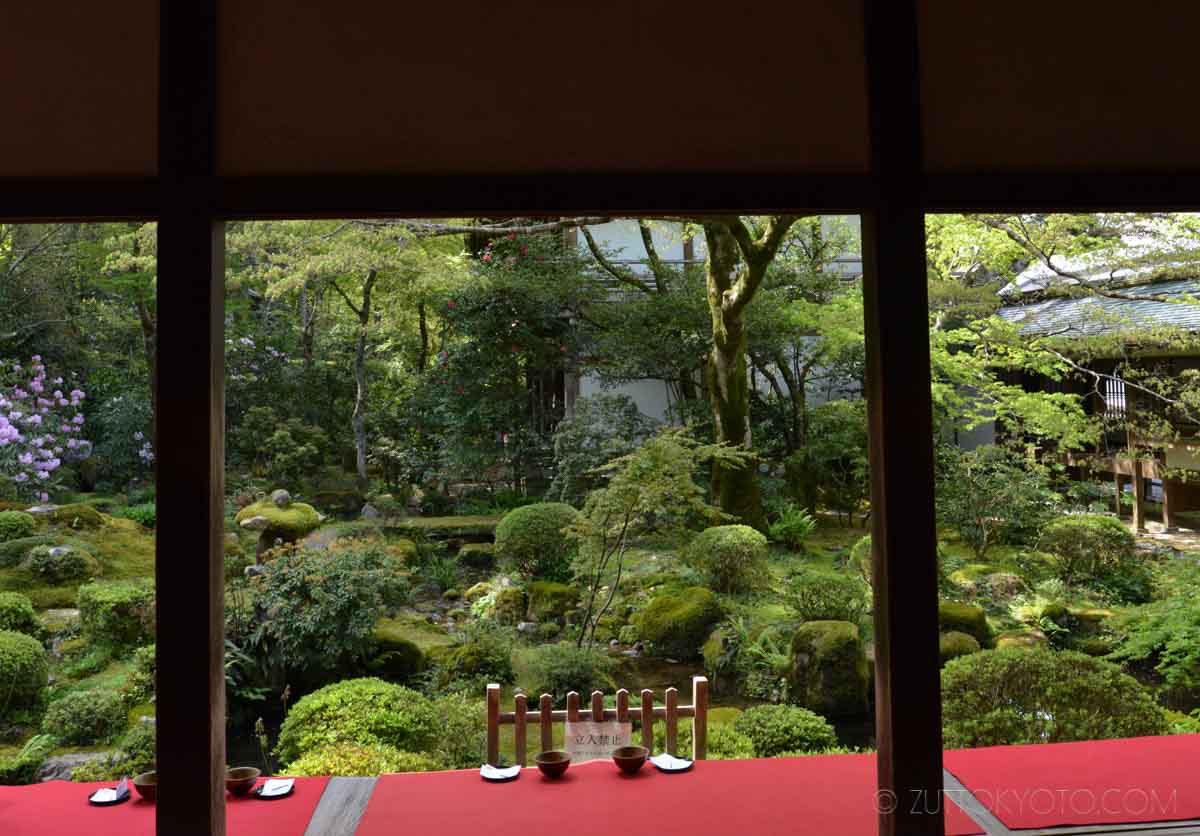
On this day, I looked at 3 gardens from Hosen-in and Jikko-in to Sanzenin temples,
and each garden was completely different and I felt different.
I was looking at the garden without thinking, but it was a time when I felt comfortable and relaxed.
It’s good to see beautiful nature sometimes.
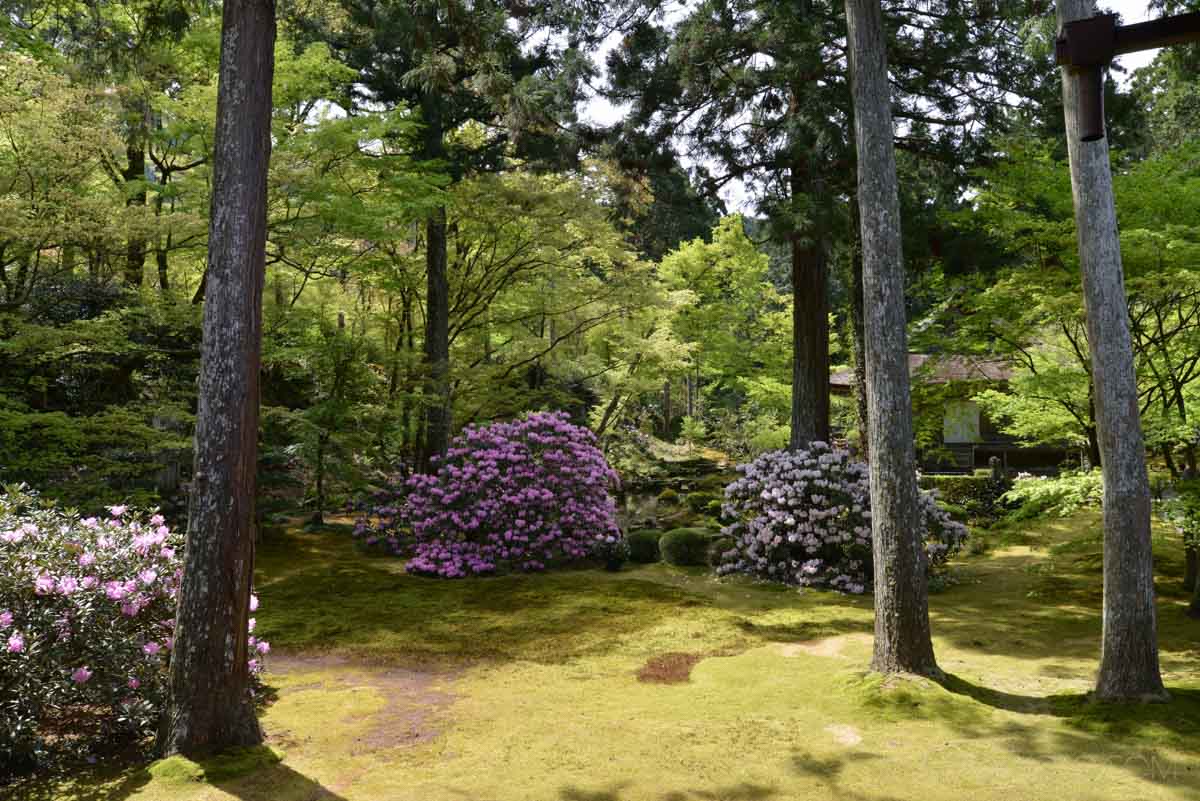
You can enjoy nature of each season at Sanzenin temples.
Rhododendrons, azaleas and hydrangeas in spring, autumn leaves in autumn and snow in winter.
Then let’s go see the large garden!
This is the season for hydrangeas. It was beautiful in full bloom.
Also, Sanzenin Temples are famous for their cute Jizo and Warabe Jizo.
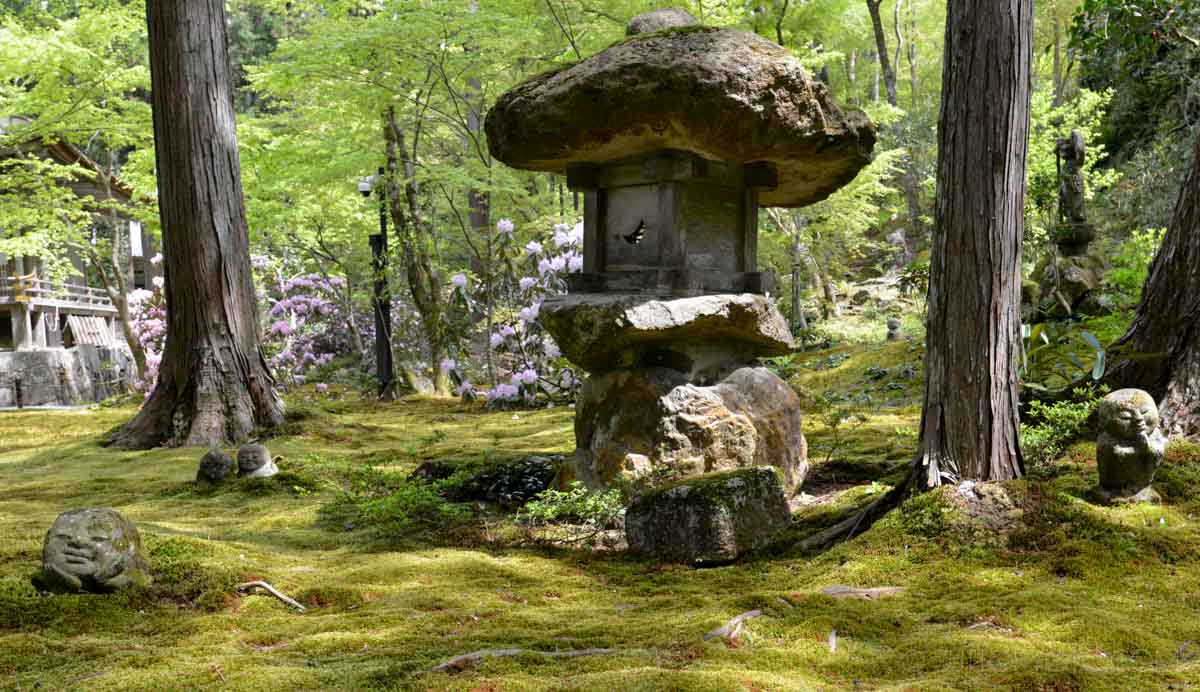
When I was walking in the garden,
they provide for free of zenzai(stewed red beans sweetened with sugar that are served in a bowl with mochi) , so I got it.
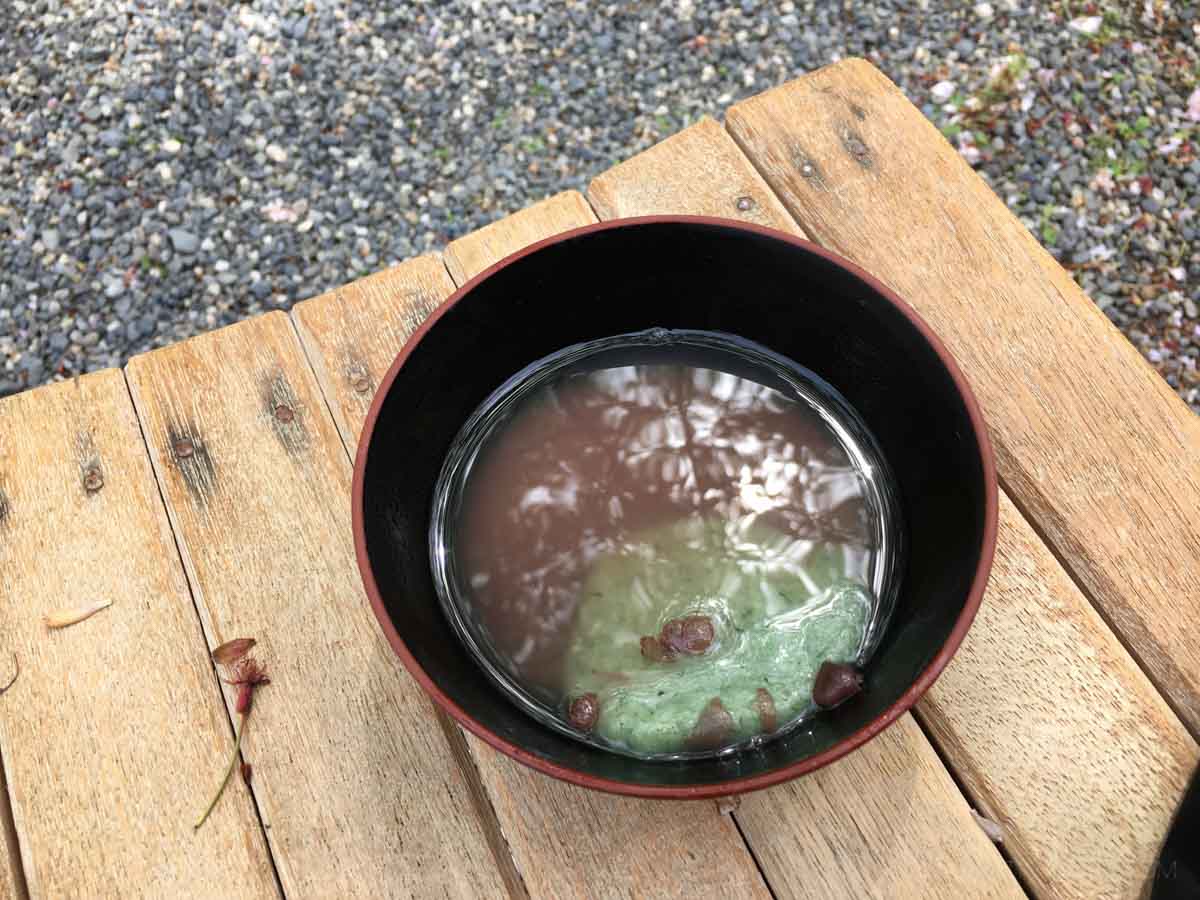
Raigoin Temple
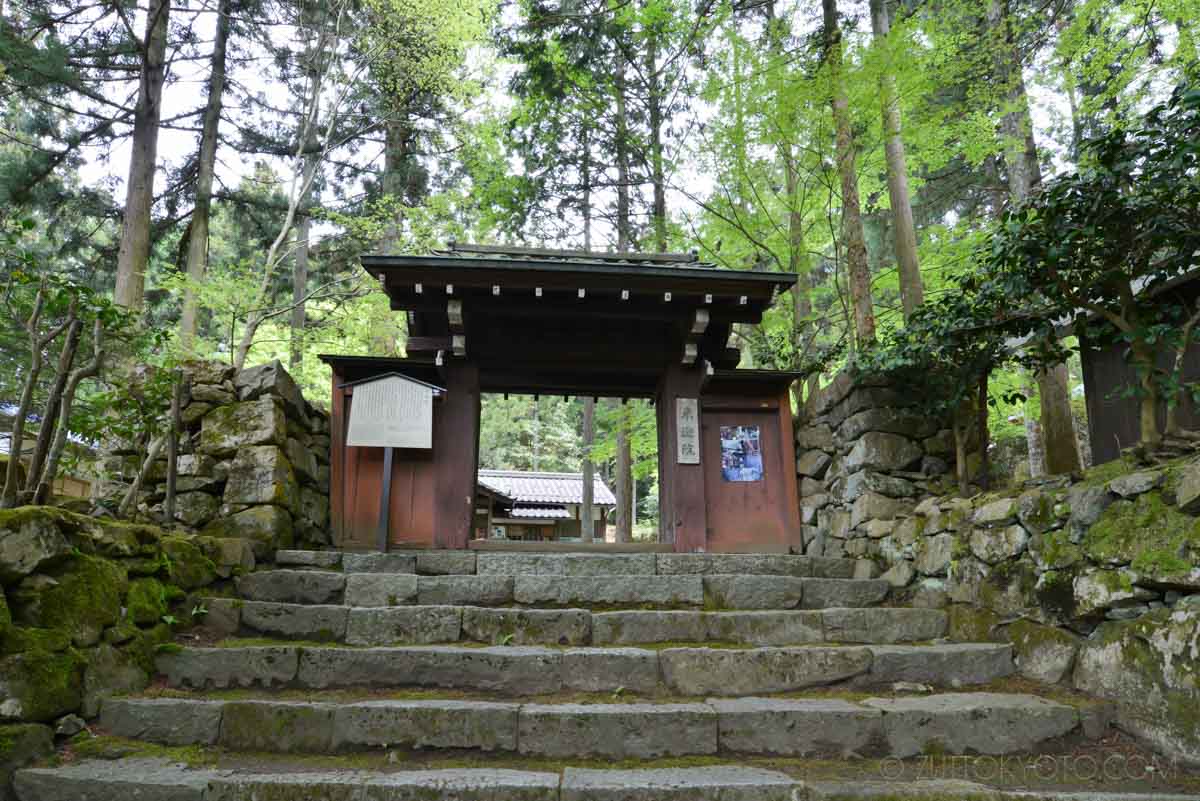
Admission fee: ¥400
(*1st,May. to 30th,May. and 1st,Nov. to 30th,Nov. : ¥500 for adults for the treasure exhibition)
It is very quiet in contrast to the bustle of Sanzenin Temple that we had before. There are only about 2 ~ 3 visitors besides me.
Raigoin Temple (来迎院) is the birthplace of “Uozan Ryu Shomyo”.
Uozan-ryu Shomyo is Shomyo (chanting of Buddhist scriptures)
chanted with a piece of music attached to the sutra, and is said to have been
compiled by Ryonin Shonin as Tendai Shomyo Uozan-ryu(天台声明魚山流).
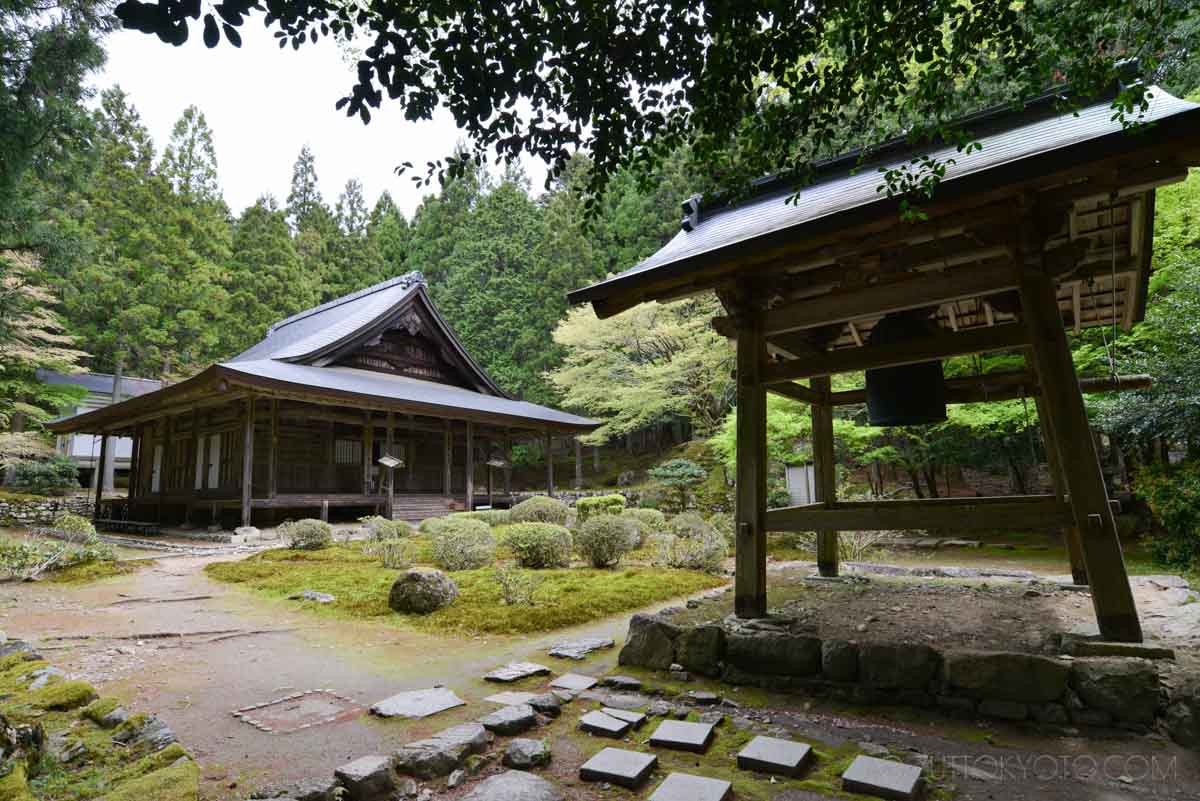
It was a very quiet temple like an ancient temple in a mountain village.
Ohara used to be famous as a place of seclusion for nobles and practitioners.
It is said that Kamo no Chomei, a Japanese poet, lived in seclusion in Ohara.
I thought that this silence was a place that people who want to escape from the world and live peacefully would like.
I also admire living in the countryside surrounded by nature.
Then, I will leave Raigoin.
We will go back to the original route and go back to the Ohara bus stop, and then head to Jakko-in Temple in the opposite direction.
It takes about 30 to 40 minutes on foot from Sanzenin temples.
Ohara is also the birthplace of Shibazuke.(Kyoto-style chopped vegetables pickled in salt with red shiso leaves)
There are shops selling shibazuke near Sanzenin temples, so it’s good as a souvenir.
There are almost no shops ahead, so I recommend this area if you are looking for souvenirs.
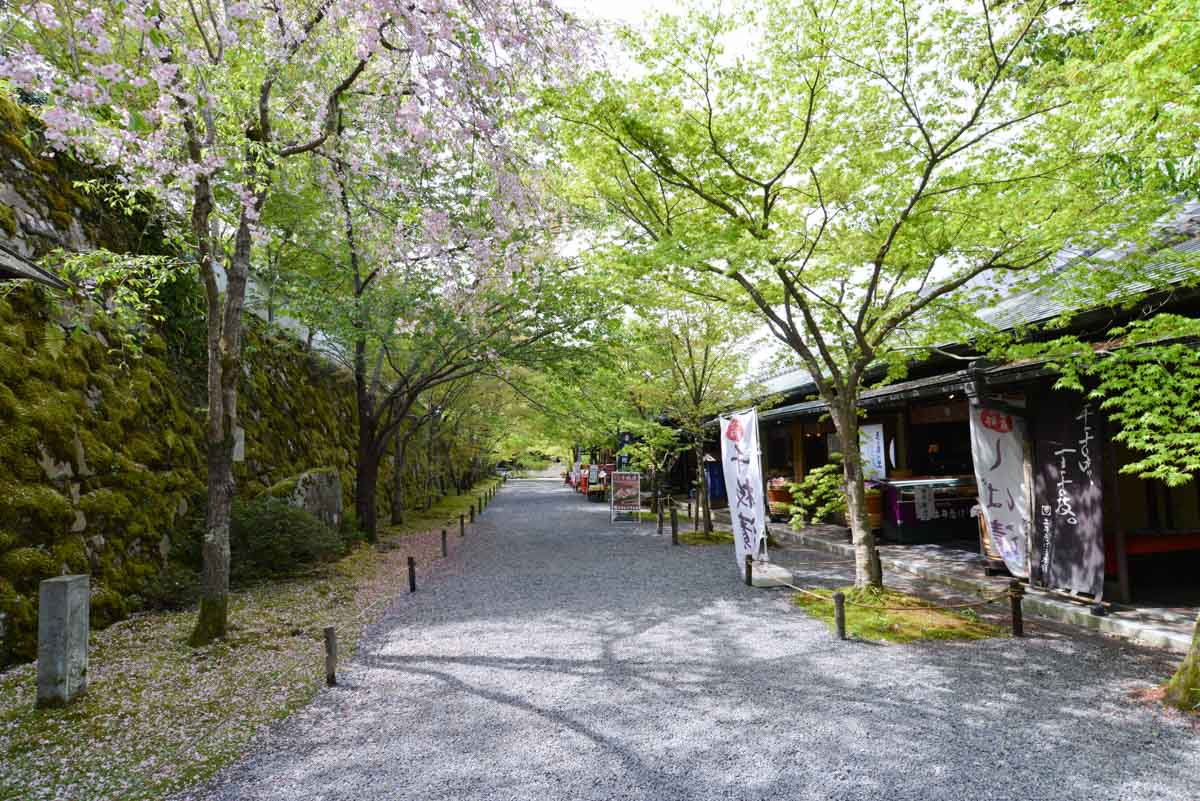
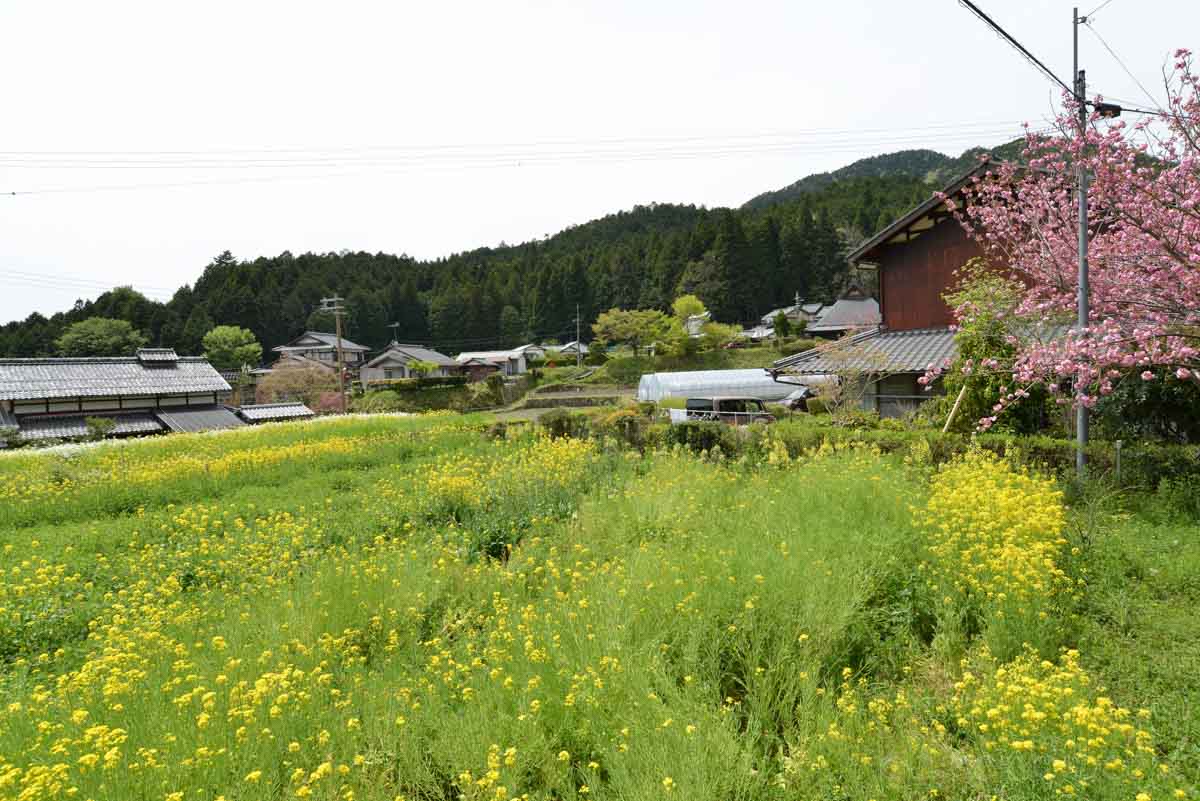
It takes about 30 minutes to get to Jakkoin by foot.
Jakkoin Temple
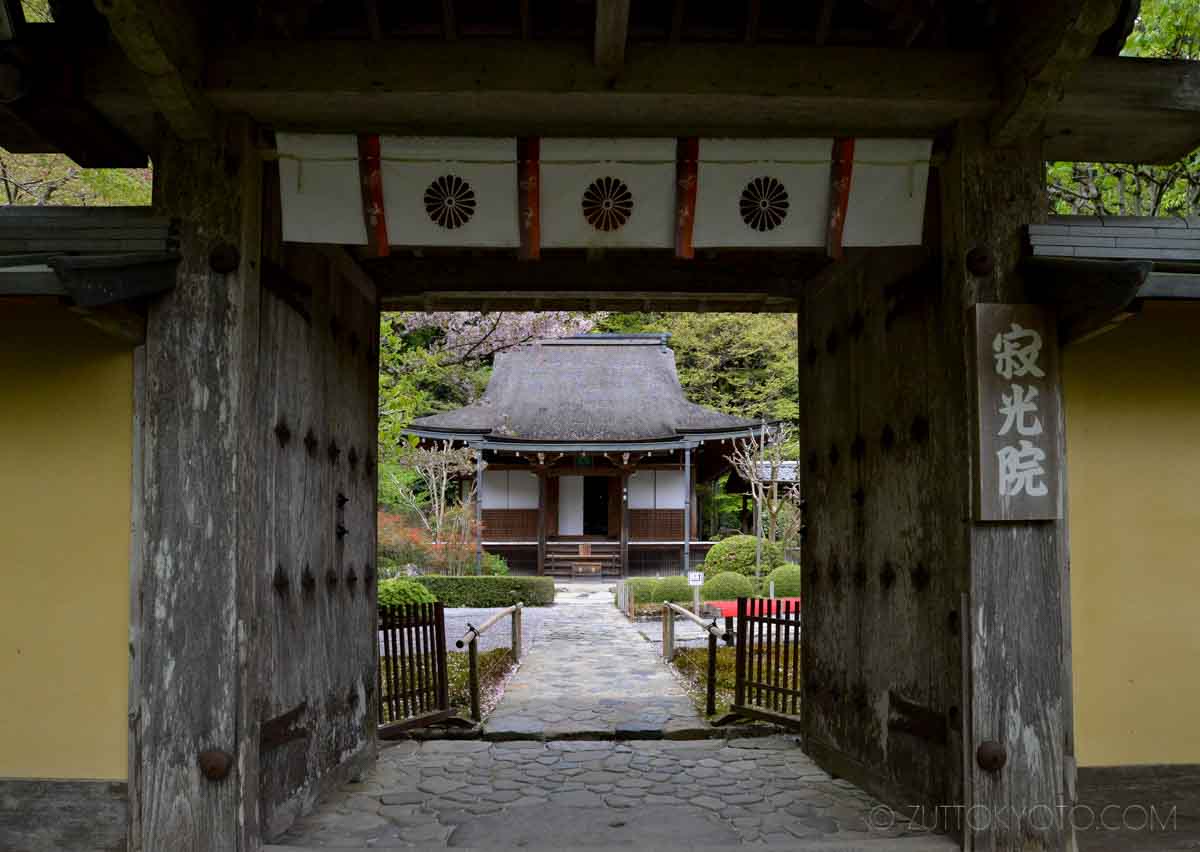
Admission fee: Adult: ¥600
High school student: ¥600
Junior high school student: ¥350
Elementary school student: ¥100
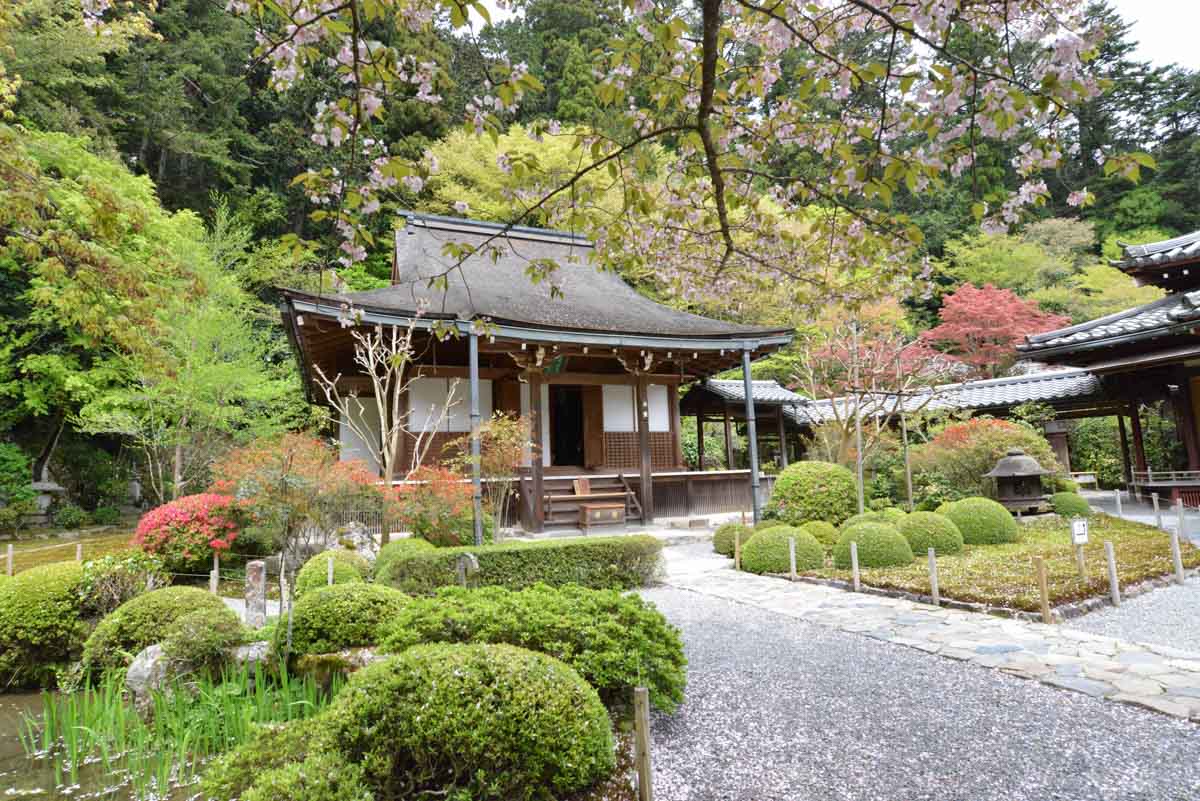
Jakko-in Temple (寂光院) is a nunnery founded by Prince Shotoku. It is said that Kenreimonin Tokuko,
a daughter of TAIRA no Kiyomori, lived in seclusion after the fall of the Taira family.
The garden associated with The Tale of the Heike is a strolling, four-sided front garden.
It’s a beautiful garden, and the autumn colors are wonderful!
Now, let’s go back to Ohara bus stop and go back!
It was very refreshing to walk in the nature in mountain village.
I wanted to write about the temples in Ohara in more detail, but the history of Ohara
was so deep that the more I researched about the history of Buddhism,
the more difficult it was, or more difficult it was, so I mainly wrote about what I saw and felt.
In Ohara, the Oharame Festival(大原女祭り) is held in spring and autumn, and you can experience
Oharame (You can rent it.) and the planting of shiso leaves. Sounds like fun!
Why don’t you go to Ohara when you come to Kyoto? I will summarize about Kyoto Ohara.
Q: What is the recommended way to get to Ohara Sanzenin Temple?
A: Take the Kyoto Bus from Kyoto Station. It takes about an hour.
Q:What are your favorite souvenirs?
A: I recommend Shibazuke, the birthplace of Ohara!
Q: Can we go sightseeing quietly?
A: I recommend from weekday morning.

